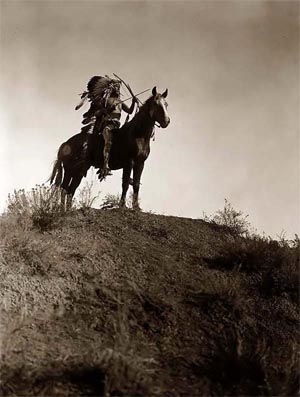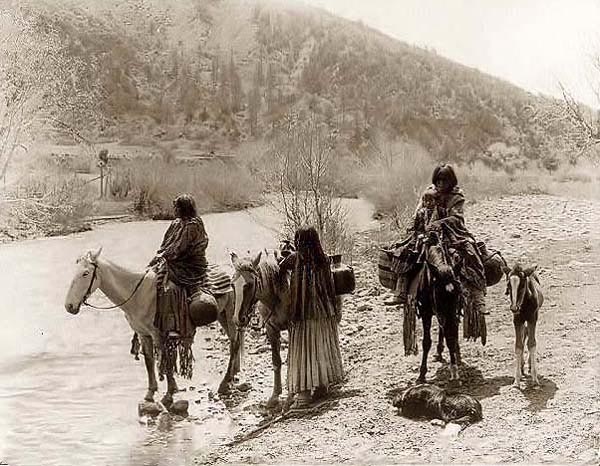Indian Inhabitants of Texas
![]()
This Site:
The History of Texas: The Early Indian Inhabitants of Texas(Previous Section: La Salle Establishes First Texas Colony)
The nearest Spanish settlement was at Panuco, near Tampico, a distance of more than two hundred leagues south of the Lavaca river.*
On the northeast, Fort Prudhomme, at the mouth of the Wabash, and Fort Crevecoeur, on the Illinois, had, but a year or two before, been constructed by the French. The Spanish colony in Florida, though formed some time before, was languishing. The city of Philadelphia had been founded but three years before, by the pious Penn. The colonies of New England, numbering then about a hundred thousand inhabitants, were struggling with Great Britain for their charters, and with the Indians for their lands. New York, with a population of some four thousand, had just changed owners, and witnessed the assembling, for the first time, of her legislature. Virginia, groaning under the despotic acts of Charles II., had just closed, with defeat, the rebellion of Nathaniel Bacon, which left her unable to pay the costs so incurred. The Spaniards claim to have settled Coahuila as early as the year 1600, but many circumstances go to prove this to be untrue.*
Chihuahua was not settled till 1691.* New Mexico had been settled earlier. As early as 1594, two Franciscan friars from Mexico visited the Indians near where Santa Fe now stands. They were well received. They returned with the information, and giving a favorable account of the country. Juan de Onate, another monk, was sent out in 1595, and made a further exploration, and perhaps took possession, or entered into a treaty with the Moqui and Apache Indians. It seems that a settlement was thereafter made, on the river, near the site of the present town of Santa Fe. In 1680, however, the Indians rose en masse, fell on the Spaniards by surprise, killed a large number of them, and obliged them to retreat to the Paso del Norte. In 1681, Otermin, governor of New Mexico, made another attempt to recover the settlement. From this period to 1695, the Spaniards and Indians were engaged in a constant warfare — the former keeping their strong-hold of Paso del Norte, and the latter holding the country about Santa Fe. At length, during the last-mentioned year, General Diego de Bargas, having conquered the Indians of New Mexico, obtained the entire pacification of the country.*
Apache IndiansFrom the foregoing sketch of European settlements in North America, it will appear that La Salle's neighbors were few and distant. The Indians, from their mode of living, and the continual wars. among their tribes, we may judge were thinly scattered over the vast country lying between the Rio Grande and Red river. The Comanches, were a tribe of roaming, predatory thieves. They occupied the northern and north-western portion of Texas, and the Rio Grande as low as the mouth of the Salado. The depredations which they had formerly committed on the Aztecs of the great empire of Anahuac, were now turned upon their European conquerors occupying the colonies of Panuco, El Paso, Montclova, and Monterey. From these they supplied themselves with horses, arms, silver plate, etc.; and, being in treaty with other Indians along the coast, and farther east and north, the latter were thus furnished with horses and firearms. The Indians along the coast, commencing on the south, were the Lipans and Carankawacs, extending from the Rio Grande along the banks of the Pashahono and the Tockanhono, the beautiful Indian names of the Colorado and Brazos.*
They lived mostly upon fish; and, from the fact that they first encountered the rude shock of the white man, have ever been considered most hostile. Indeed, from the stories of Belile and others, they have been deemed cannibals; but no authentic fact has been sufficiently established to fix upon these people the horrid practice. The kind reception by them given to La Salle, shows their good disposition. The next tribe, going east, were the Cenis, inhabiting Buffalo bayou, the San Jacinto valley, and the Trinity river. These were distinguished for their hospitality and gentleness of disposition. The greater part of this tribe occupied the banks of the Trinity, which they called Arcokisa. Here their villages were large and populous. Their habitations were like beehives, and some of them forty feet high.*
As they devoted much time to raising corn, etc., they were enabled to sustain a larger population, and were comparatively more wealthy. They were great traders, and had procured (through their allies the Comanches) from the Spaniards horses, money, silver spoons, spurs, and clothing. Such were their comforts and conveniences of life when found there by the French in 1686. The next tribe east were the Nassonis, or Nassonites, a name perhaps including several tribes living between the Cenis and the Sabine river. These Indians seemed to be alike distinguished with their western neighbors for kindness to strangers, and the possession of means to make them comfortable.*
Such were the original inhabitants of Texas. They formed a portion of the great Shoshonie class, occupying what is now the southwestern part of the United States. The landing of the colony of La Salle was to them a new era. The sight of ships and the sound of firearms were to them subjects of awe and astonishment. Living in the simplicity of uneducated nature, they had their domestic wars, which were conducted without system, but in a manner suited to their habits. They were worshippers of the sun, and full of the superstitions common to the North American Indians. They had their rain-makers, their game-finders, and their witches. But the latter, like the witches of ancient New England, found little favor; they were deemed to be in communion with the evil one, and consequently were put to death—most generally by the war-clubs of those that suffered under their supposed incantations. [Next Section of Texas History: Early Territorial Claims to Texas ] |
![]()
|
Site Copyright © 2003-2018 Son of the South. For questions or comments, contact paul@sonofthesouth.net. |
|
|
|
Are you Scared and Confused? Click Here to read My Snake Story, a story of hope and encouragement, to help you face your fears. |
||
 When
When 